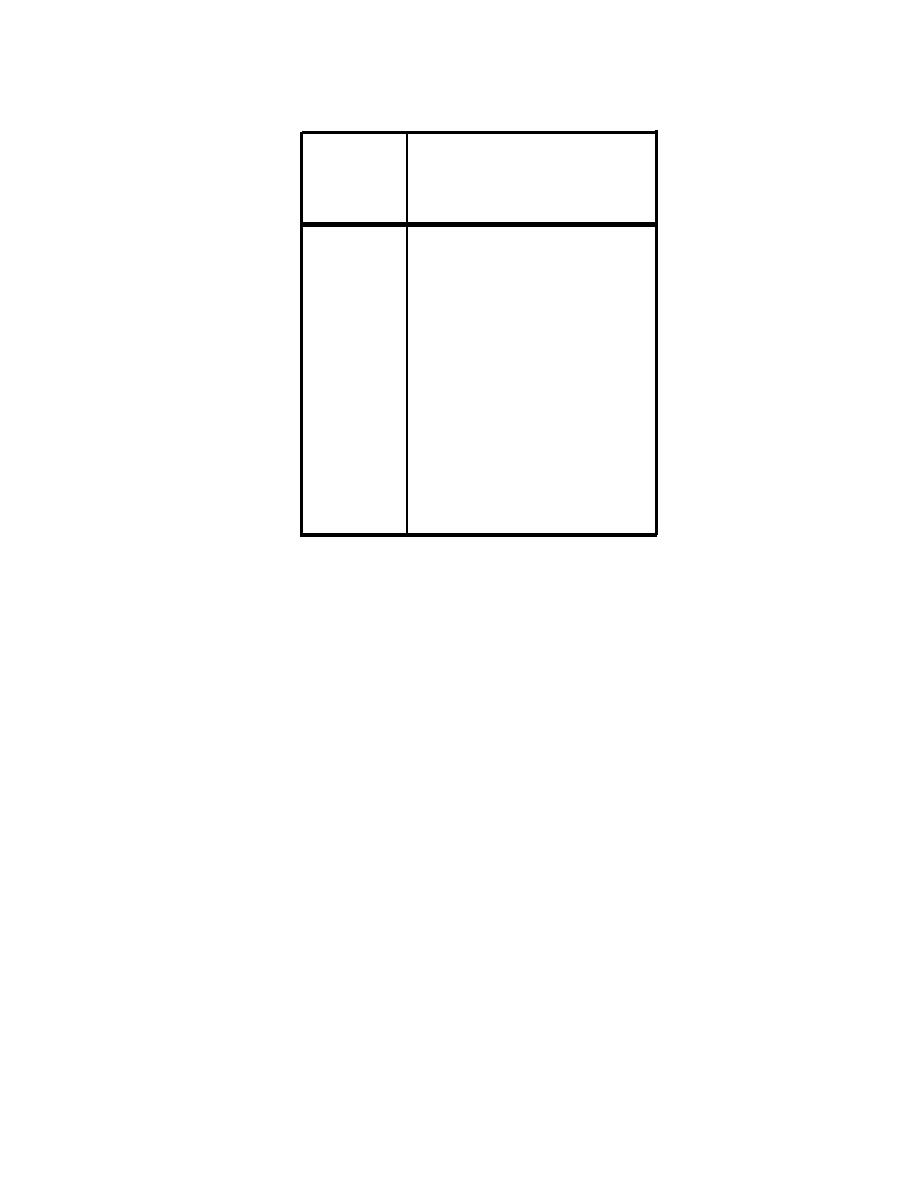
TM 5-805-4/AFJMAN 32-1090
Table 4-9. Transmission Loss (in dB) of Typical Double-Glass Windows, Using 1/4-in.-Thick Glass Panels With Different Air
Space Widths.
Octave
Width of Air Space (in.)
Band
1-1/2
6
1/4
(Hz)
31
13
14
15
63
18
19
22
125
23
26
30
250
26
30
35
500
29
34
40
34
38
43
1000
2000
31
37
44
4000
34
41
50
8000
38
46
54
STC
31
37
43
Notes :
1. For maximum acoustic performance, each sheet of glass should be mounted
in soft sealing gaskets to minimize rigid , structural connections between
the sheets.
2.
See notes under Table 5-14.
surface weight (in lb/ft.2) of the thinnest section of
1). Airborne excitation of structural surfaces in the
concrete and also to estimate the average surface
mechanical equipment room should be prevented
weight of the total floor. Second, the arithmetic
by protecting all walls and columns with isolated
average of these two surface weights is obtained,
second walls or encasements. As an alternative,
and this average is used to enter tables 4-12
the radiating walls and columns in the quiet
through 4-15 for the TL of the equivalent weight
receiving room can be covered with isolated second
of a flat concrete slab. If the resulting average
walls or encasements.
corresponds to a surface weight of less than 6-inch-
(6) Nonflat floor slabs. The above five types of
thick solid concrete, the floor is not recommended
floors are assumed to be of flat slab construction.
for the support of large mechanical equipment
Other popular forms are of a beam-slab type that
directly above category 1 through 3 spaces (table
provides stiffening beams combined with thin sec-
2-2). All floor slab recommendations given in the
tions of concrete, such as prestressed cored slabs,
manual area are based on acoustical consider-
T-shaped beams, and coffered pan construction (fig
ations and should not be construed as referring to
4-7). Since the thin section usually accounts for
the structural adequacy of the slabs.
about 60 to 80 percent of the total floor area, the
(7) Noise reduction (NR) of floor-ceilings. The
TL is largely influenced by the thickness and area
procedure for determining the noise reduction of
floor-ceiling construction is identical to that given
of the thinnest section. The thick web of the beam
in Section 4-2.b for walls. The area SW now
component gives mass and stiffness, and this
becomes the floor area common to the source and
should improve the low-frequency TL. There is no
receiving rooms, and the correction term C is now
collection of measured data on these types of
called the "floor correction term," but it is still
floors, so only a rough estimating procedure is
obtained from table 3-1.
suggested. First, it is necessary to estimate the
4-15


 Previous Page
Previous Page
